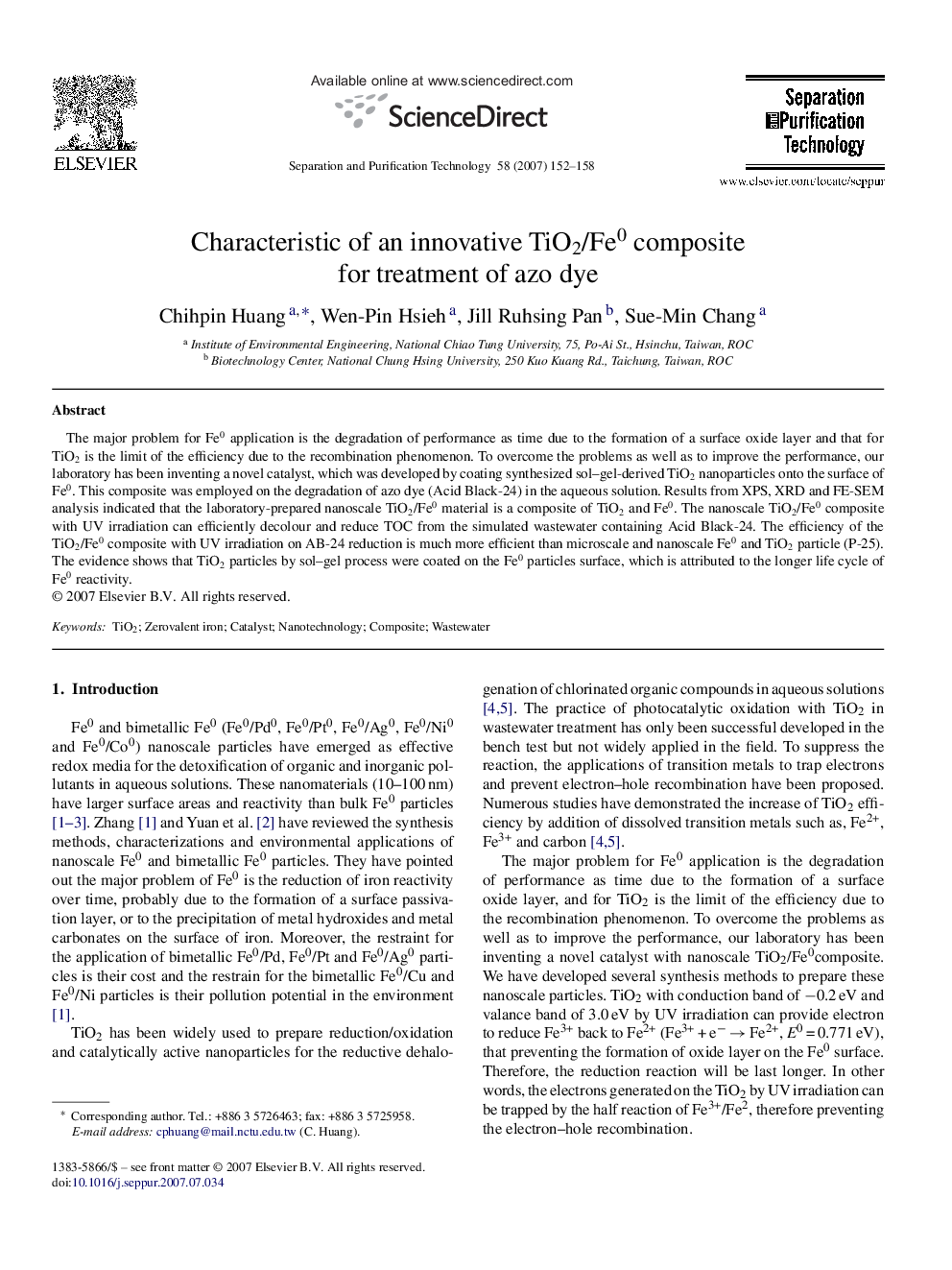| Article ID | Journal | Published Year | Pages | File Type |
|---|---|---|---|---|
| 643796 | Separation and Purification Technology | 2007 | 7 Pages |
The major problem for Fe0 application is the degradation of performance as time due to the formation of a surface oxide layer and that for TiO2 is the limit of the efficiency due to the recombination phenomenon. To overcome the problems as well as to improve the performance, our laboratory has been inventing a novel catalyst, which was developed by coating synthesized sol–gel-derived TiO2 nanoparticles onto the surface of Fe0. This composite was employed on the degradation of azo dye (Acid Black-24) in the aqueous solution. Results from XPS, XRD and FE-SEM analysis indicated that the laboratory-prepared nanoscale TiO2/Fe0 material is a composite of TiO2 and Fe0. The nanoscale TiO2/Fe0 composite with UV irradiation can efficiently decolour and reduce TOC from the simulated wastewater containing Acid Black-24. The efficiency of the TiO2/Fe0 composite with UV irradiation on AB-24 reduction is much more efficient than microscale and nanoscale Fe0 and TiO2 particle (P-25). The evidence shows that TiO2 particles by sol–gel process were coated on the Fe0 particles surface, which is attributed to the longer life cycle of Fe0 reactivity.
